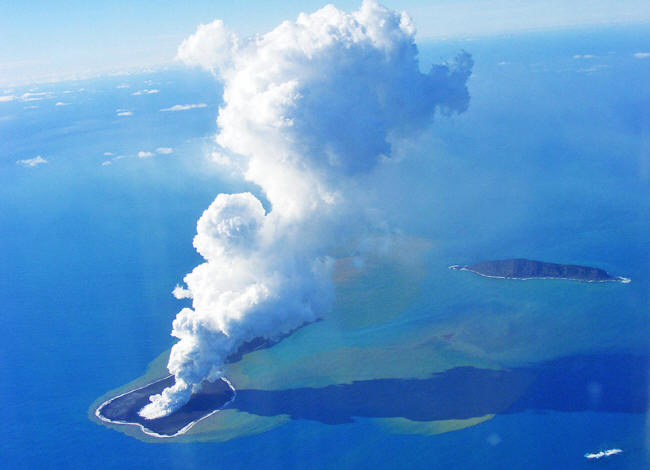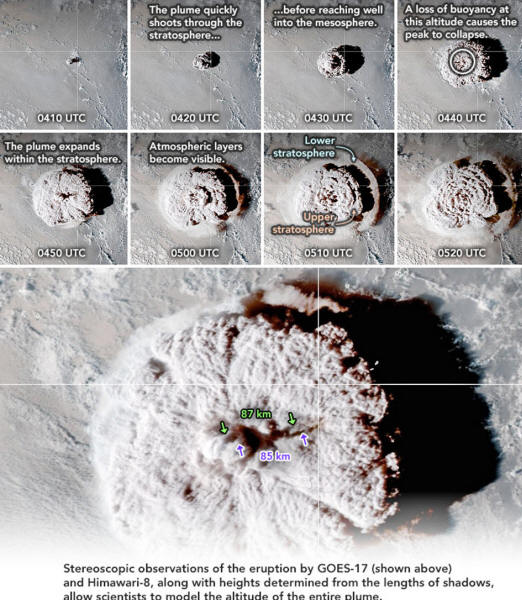|
February 28, 2022 from SpaceWeather Website
The plume from Hunga Tonga-Hunga Ha'apai behaved like a mega-thunderstorm that rose 58 kilometers (38 miles) into the atmosphere.
When a volcano exploded out of the Pacific Ocean near Tonga on Jan. 15th, scientists immediately realized they were witnessing something special.
Little did they know how special...
A new analysis of images from Earth-orbiting satellites shows that the plume punched a hole in our atmosphere all the way up to the mesosphere.
Kristopher Bedka and colleagues combined images from two satellites:
...both of which observed the eruption using similar infrared cameras from different points in geosynchronous orbit.
Using the mathematics of
stereo geometry, the team calculated that the plume rose to 58
kilometers (36 miles) at its highest point.
The Tonga plume was 1.5
times the height of Pinatubo, making it the tallest of the Space
Age.
Indeed, there was a surge of noctilucent clouds after the eruption (possibly coincidental) as well as ripples in the airglow layer over the Pacific Ocean.
Tonga was truly out of this world...
Video
|



